Popular on Food52
18 Comments
Sue
August 22, 2019
Thank you, I just now got my first package of Soba Noodles and took for ever to find simple easy instructions how to cook them. You are the best, now to find a great recipe to prepare them some way with Shrimp. I may try Shrimp Alfredo, you think?
Cami
May 19, 2019
I followed your steps since it was my first time making soba noodles. They turned out perfect. Thanks ! I used them as a salad with fresh herbs, pickled carrots and daikon, tofu and a peanut-based vinaigrette. It was amazing :)
Jo Z.
June 23, 2018
I made some Tom Ka Soup today and needed to find out how to cook the Soba Noodles right. We'll add them just before we eat, thanks this is great!
Kimberly M.
June 28, 2017
Excellent washing method for keeping these noodles from getting gummy.
Question: how do you store these noodles if you're not making the dish right away? I'm making a cold soba noodle salad for a crowd and would like to cook the noodles at home and assemble the dish the following day at the campground. Thank you!!
Question: how do you store these noodles if you're not making the dish right away? I'm making a cold soba noodle salad for a crowd and would like to cook the noodles at home and assemble the dish the following day at the campground. Thank you!!
Tammy H.
May 21, 2017
My soba noodles are ALWAYS gummy. I tried this tonight, and I am not exxagerating to say it is life changing. The noodles are fantastic!
Alexandra S.
April 28, 2016
This post totally changed my soba making/eating experience—untangled soba noodles .... a miracle!
kgw
May 7, 2014
A great sauce for cold soba, from Chinese Gastronomy by Hsiang Ju Lin & Tsuifeng Lin:
3 scallions, finely chopped
2 tsp red pepper oil
2 tsp sesame oil
2 tbs vinegar
4 level tsp sugar
1 ½ level tsp salt
½ level tsp white or black pepper
½ level tsp crushed wild pepper (I substitute roasted, crushed Szechuan pepper here)
4 tsb peanut (or other high-heat oil)
Mix all but the oil in a 4-cup Pyrex measure, and then heat the oil to almost smoking. Pour in a stream over the ingredients in the Pyrex cup, and stir. Let the mixture stand for 15 minutes, and then pour over the cold noodles. Xlnt!
3 scallions, finely chopped
2 tsp red pepper oil
2 tsp sesame oil
2 tbs vinegar
4 level tsp sugar
1 ½ level tsp salt
½ level tsp white or black pepper
½ level tsp crushed wild pepper (I substitute roasted, crushed Szechuan pepper here)
4 tsb peanut (or other high-heat oil)
Mix all but the oil in a 4-cup Pyrex measure, and then heat the oil to almost smoking. Pour in a stream over the ingredients in the Pyrex cup, and stir. Let the mixture stand for 15 minutes, and then pour over the cold noodles. Xlnt!
sarabclever
May 7, 2014
I had no idea! This is like making homemade lasagna, which Marcella Hazan says you must wash like fine linens to remove excess starch.
Katie O.
May 7, 2014
Hm, interesting about the rinsing. My dad is Japanese, and neither he nor my grandmother has ever washed soba after cooking. Generally the way we go is to just cook them according to the time on the package, being very vigilant as soba can go from springy and toothsome to mushy in a matter of a minute. The way my family has always done it is to keep a colander filled with about five ice cubes at the ready, with a large pot in the sink below it. Pour the soba into the colander, catching the soba water (sobayu) for mixing with your dipping tsuyu for a broth at the end of the meal. Remove the pot and run cold water over the soba through the colander for about twenty seconds, giving the noodles a little shake with your fingers so the ice cubes distribute. Remove and drain. I suppose this last step is kind of like rinsing, but I always thought of it as shocking (to stop the soba from continuing to cook, like you'd do if you want soft-boiled eggs). If you handle the soba too much it will get gummy.
Katie O.
May 8, 2014
The more I think about it, the more I think it was rinsing that my grandma did all along, but under a running tap with ice, as others have said, not in a separate cold water bath. Again it's the cold to stop the soba from cooking which is really essential, and not tons of washing. Funny how you can learn how to do something and repeat it on autopilot without fully seeing why! That's why I like sites like this. Thanks.
Sue
August 22, 2019
Nice, Katie, as I read your comment that's what I was thinking you were washing and cooling all along.
Liz B.
May 7, 2014
This is a great post. Soba is definitely better when washed, but I think you can even skip the "bath" portion here by just shocking the soba with super cold water right out of the pot/aka right after it has been dumped into the colander. Then, you can scrub and rinse with one hand under the running water.
Here's a cold soba bowl I made around easter! http://thatumamilife.files.wordpress.com/2014/04/2014-04-19-02-33-28-1.jpg
http://thatumamilife.wordpress.com - a clean eating bento blog. Japanese or Asian-inspired!
Here's a cold soba bowl I made around easter! http://thatumamilife.files.wordpress.com/2014/04/2014-04-19-02-33-28-1.jpg
http://thatumamilife.wordpress.com - a clean eating bento blog. Japanese or Asian-inspired!
Liz B.
May 7, 2014
SO SORRY, THIS IS THE LINK FOR THE SOBA BOWL :( http://thatumamilife.files.wordpress.com/2014/04/2014-04-19-12-21-43-2.jpg?w=800
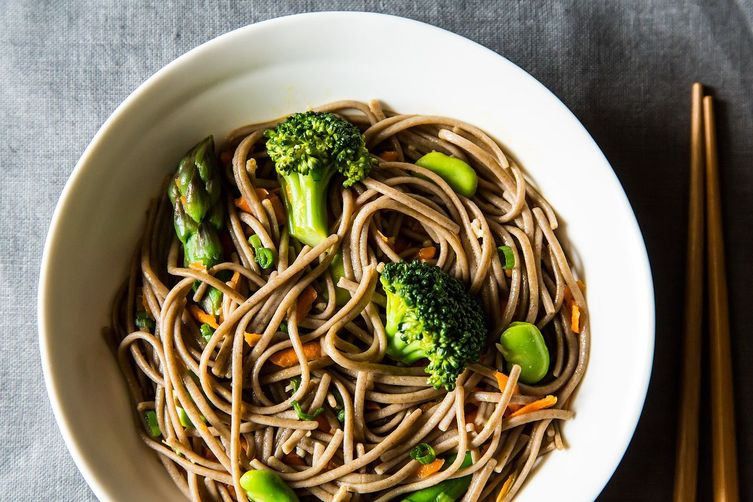
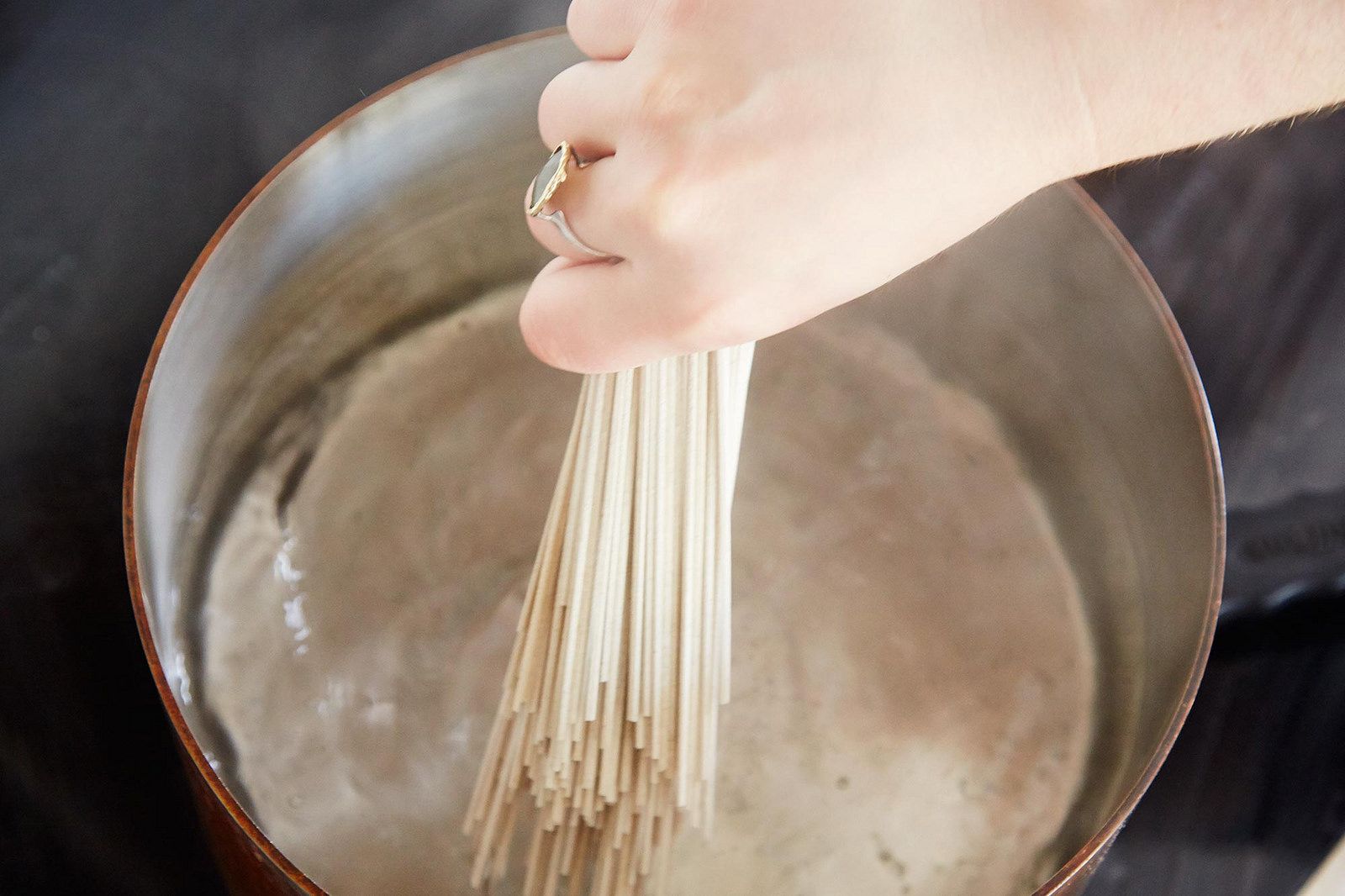
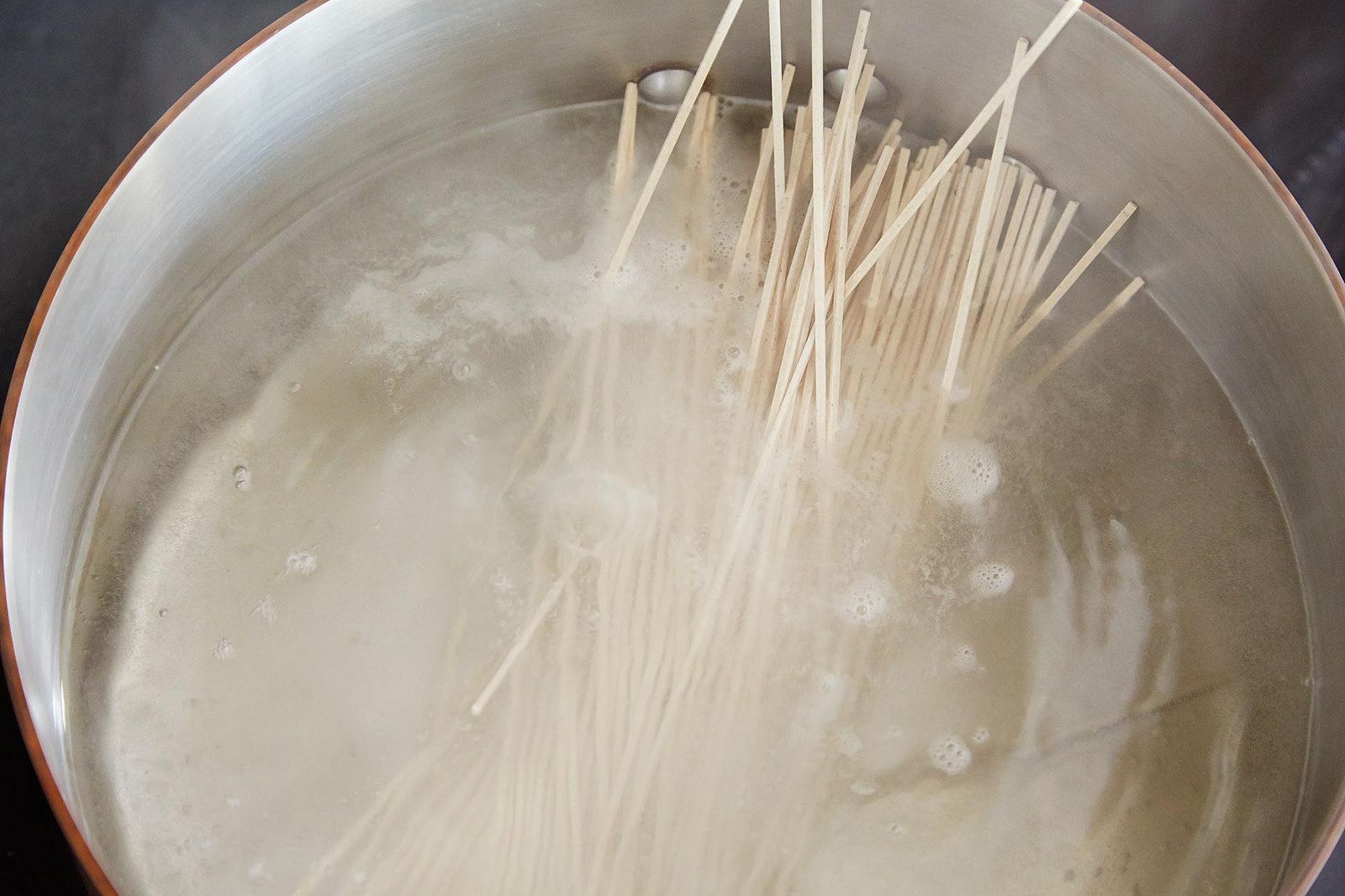
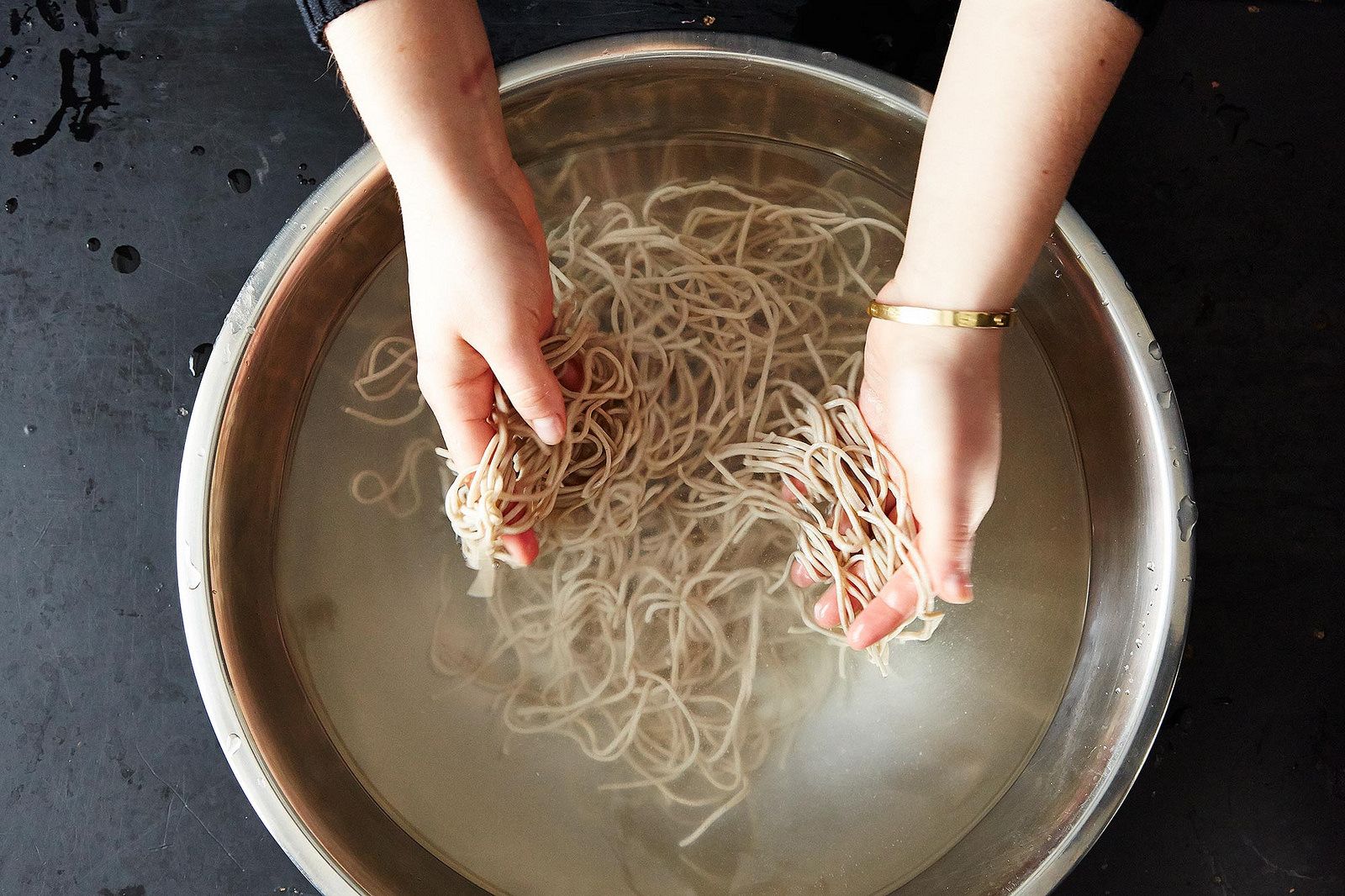
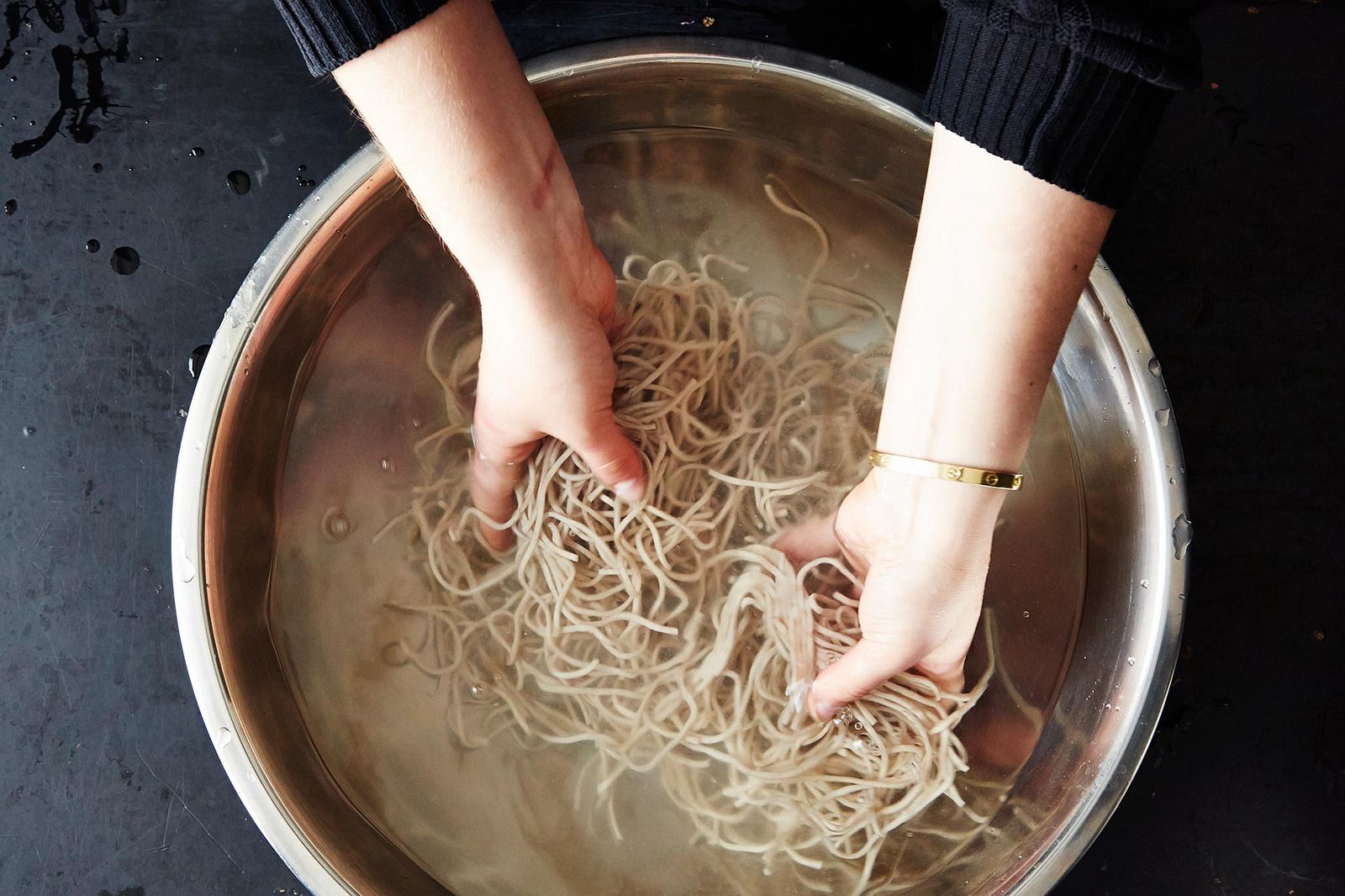


See what other Food52 readers are saying.